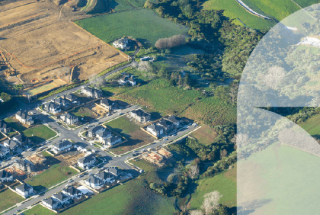Scope of Court Orders for “Work Required to Be Done” in Easements & Covenants

Scope of Court Orders for “Work Required to Be Done” in Easements & Covenants
Tuesday 12 July, 2022
The High Court recently determined the scope of section 313(1)(c) of the Property Law Act 2007 (“PLA”), which allows the Court to make certain orders when there is a question or dispute about the existence or effect of easements or positive and restrictive covenants. The case involved a pipeline easement and considered Council’s responsibility to remove an asbestos pipeline from private land.
The (now) Far North District Council (“Far North DC”) had held a pipeline easement for waterworks and a right of way since 1983 over Māori freehold land administered by Ngakahu/Ngakohu Whānau Ahu Whenua Trust (“the Trust”). At the time the pipeline easement was granted an asbestos pipeline was already situated on the easement land and Far North DC was permitted to use that existing pipeline under the terms of the easement. In 1994, Far North DC installed a new PVC pipeline but did not remove the asbestos pipeline. In 2019, the Trust gave notice, pursuant to section 308 of the PLA, to Far North DC to remove the asbestos pipeline. The estimated cost of the removal was approximately $165,000 and Far North DC refused.
The Trust sought relief under section 313(1)(c) of the PLA for the Court to make an order that work was required to be done under the terms of the pipeline easement, specifically the removal of the asbestos pipeline by Far North DC. The Court considered the scope of the phrase “work required to be done under the terms of an easement” and determined that the words “under the terms of an easement” confirm that section 313(1)(c) of the PLA is aimed at enforcement of the terms of an easement rather than enforcement of other legal rights or obligations. In this particular case, the Court decided that the pipeline easement contained no express requirement to remove pipes that had been replaced and because there was no reason to imply such a term the Court did not make an order under section 313 requiring Far North DC to remove the asbestos pipeline. The Court did note in its decision that Far North DC remained responsible for maintaining the asbestos pipeline.
The case also considered whether it could order the removal of a driveway constructed by Far North DC on the easement land and similarly determined that section 313 (1)(c) of the PLA could only be used to enforce the terms of the pipeline easement which did not require Far North DC to remove the driveway.
Although Far North DC was not required to undertake any further work in the particular circumstances of this case, it is a good reminder to local authorities to carefully consider the terms of easements it enters into over private land.
For any questions relating to this article, please get in touch with one of our experts below.











